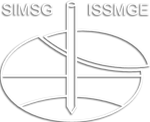Bridging the gap: a comparative insight into onshore and offshore ground modelling practices
Bridging the gap: a comparative insight into onshore and offshore ground modelling practices
Creating site-specific, data-driven ground models presenting a three-dimensional spatial representation of geometric and geotechnical/geomechanical properties of the subsurface and defining the soils and rocks behaviour under static and dynamic conditions is an essential aspect in the design of infrastructures across various industries, including construction, oil and gas, and renewables. Onshore and offshore ground modelling share a common purpose: to allow the conduction of geotechnical design that ensures adequate performance with respect to ultimate and serviceability limit states of structures and infrastructures. The definition of ground models relies on the acquisition and interpretation of data from multiple and diverse testing methods including geophysical and geotechnical investigations, and remote sensing technologies. Subsequently, data are interpreted using a variety of techniques, which are to be selected depending on the scope and aim of the project and on the type, quantity, and quality of available data. While the integration of geological, geophysical, and geotechnical data provides a best-practice approach in both onshore and offshore projects, significant differences arise due to distinct environmental conditions, specific geotechnical challenges, and logistic considerations (including areal extent). By examining these similarities and differences, this paper provides a structured comparative insight into ground modelling compilation process in onshore and offshore practices, with particular attention to the iterative nature of the ground model workflow endorsed by the second-generation Eurocode 7. The paper explores key topics such as data acquisition, interpretation, and technological barriers.
P. Vitale; M. Vanneste; Rasmus Klinkvort; Marco Uzielli
5th International Symposium on Frontiers in Offshore Geotechnics (ISFOG2025)
4 - Ground models
https://doi.org/10.53243/ISFOG2025-595
